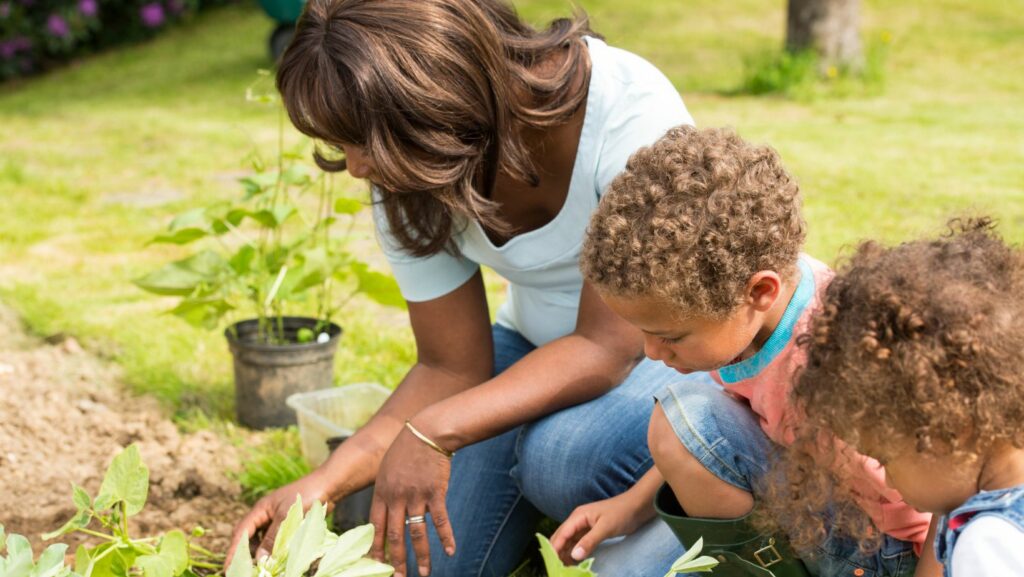As I explore the rich traditions of Native American gardening I’m constantly amazed by the deep wisdom and sustainable practices that have been passed down through generations. These time-tested methods not only produced abundant harvests but also maintained harmony with the natural world.
Native Americans developed sophisticated agricultural techniques that many modern gardeners are now rediscovering. From the famous Three Sisters companion planting method to natural pest control strategies these traditional practices offer valuable lessons for today’s sustainable gardening movement. I’ll share how these ancient techniques can transform your garden while honoring the indigenous peoples who first cultivated this land.
Key Takeaways
- Native American gardening practices focus on sustainable methods that maintain harmony with nature, particularly through companion planting techniques like the Three Sisters method (corn, beans, squash).
- Traditional water conservation techniques, such as waffle gardens and strategic mulching, can reduce water usage by 20-40% while maintaining healthy plant growth.
- Sacred plants play dual roles in Native American agriculture, serving both practical purposes (like pest control and medicine) and spiritual functions in ceremonial practices.
- Moon phase planting aligns gardening activities with lunar cycles to optimize plant growth, with specific activities recommended for different moon phases.
- Modern applications of Native American gardening techniques can effectively address contemporary challenges in sustainable agriculture, especially in urban and drought-prone environments.
Native American Gardening
Native American agricultural practices incorporate sophisticated techniques developed over thousands of years. These methods focus on sustainable land use through intercropping polycultural systems.
The Three Sisters Planting Technique
The Three Sisters method combines corn, climbing beans and squash in a symbiotic growing relationship. Corn stalks provide natural trellises for beans, while beans fix nitrogen in the soil for corn growth. Squash spreads along the ground, creating living mulch that retains soil moisture and prevents weed growth. This planting arrangement maximizes space in a 4×4 foot mound with 4-5 corn plants, 4 bean plants and 2-3 squash plants.
- Plant sunflowers as windbreaks around garden perimeters
- Grow tobacco near food crops to repel pest insects
- Position aromatic herbs like sage between vegetable rows
- Integrate Jerusalem artichokes to break up heavy clay soils
- Add amaranth as living mulch between larger plants
| Plant Combination | Primary Benefit |
|---|---|
| Corn + Pole Beans | Structural support + nitrogen fixing |
| Squash + Corn | Weed suppression + shade tolerance |
| Sunflower + Beans | Wind protection + vertical growing |
| Sage + Vegetables | Natural pest control |
Sacred Plants in Native American Agriculture
Sacred plants hold profound cultural significance in Native American agriculture, serving both practical and spiritual purposes in indigenous communities across North America.
Medicinal Plants and Herbs
Native American healers cultivate specific plants for their therapeutic properties. These include:
- Echinacea (Purple Coneflower): Used for immune system support
- Sage: Applied for purification rituals and respiratory health
- Black Cohosh: Grown for women’s health remedies
- Yarrow: Cultivated for wound healing and fever reduction
- Sweetgrass: Planted for ceremonial smudging and arthritis treatment
The location and timing of medicinal plant harvesting follows specific traditional protocols that honor the relationship between the plant and harvester.
Ceremonial Crops
Sacred ceremonial plants connect Native American communities to their spiritual practices through cultivation and use:
- Tobacco: Reserved for prayer offerings and ceremonial pipe rituals
- White Sage: Essential for smudging ceremonies and spiritual cleansing
- Cedar: Integrated into purification rites and protection ceremonies
- Corn: Central to creation stories and harvest celebrations
- Peyote: Maintained by specific tribes for religious ceremonies
Each ceremonial plant requires distinct growing conditions and careful tending to maintain its sacred properties. Traditional knowledge dictates specific planting times aligned with lunar cycles and seasonal changes.
| Sacred Plant | Primary Ceremonial Use | Growing Season |
|--------------|------------------------|----------------|
| Tobacco | Prayer offerings | Spring-Fall |
| White Sage | Smudging | Year-round |
| Cedar | Purification | Perennial |
| Corn | Harvest rituals | Spring-Fall |
| Peyote | Religious ceremonies | Year-round |
Sustainable Growing Practices
Native American gardening practices embrace natural cycles through ecological approaches that maintain soil health while preserving water resources. These time-tested methods demonstrate the effectiveness of working in harmony with nature.
Natural Pest Control Methods
Native American pest control methods integrate companion planting with beneficial insects to create balanced garden ecosystems. Here are key techniques:
- Plant marigolds along garden borders to repel harmful nematodes
- Scatter yarrow throughout plots to attract predatory wasps that feed on destructive insects
- Grow aromatic herbs like sage mint thyme between vegetable rows to confuse pest insects
- Include sunflowers as trap crops to draw harmful insects away from food plants
- Sprinkle wood ash around plant bases to deter crawling insects like slugs cutworms
- Create shallow depressions around plants to capture rainfall runoff
- Apply thick mulch layers of dried leaves grass clippings to reduce evaporation
- Position taller plants on west sides to shade moisture-loving crops
- Build waffle gardens with raised borders to direct water flow toward plant roots
- Plant drought-resistant varieties like tepary beans mesquite amaranth
| Water Conservation Method | Water Savings |
|---|---|
| Waffle Garden Technique | 30-40% reduction |
| Mulching | 20-25% reduction |
| Companion Planting | 15-20% reduction |
| Strategic Plant Placement | 10-15% reduction |
Garden Design and Layout
Native American garden layouts reflect deep cultural connections to celestial bodies natural cycles. These traditional designs integrate sacred spaces with practical growing areas based on indigenous principles of harmony balance.
Moon Phase Planting
Moon phase planting aligns garden activities with lunar cycles for optimal growth conditions. The waxing moon (new moon to full moon) supports above-ground plant development with increased gravitational pull drawing moisture upward. Key planting alignments include:
- Plant leafy greens beans during the first quarter moon
- Sow flowering crops fruits during the second quarter
- Add mulch compost during the full moon
- Focus on root crops during the waning moon
- Avoid planting 3 days before after the new moon
- Eastern entrance to honor the rising sun
- Medicine wheel layout with four directional sections
- Central gathering area for ceremonies meditation
- Sacred plants arranged in circular patterns
- Natural boundaries using indigenous stones
- Four sacred herbs (sage sweetgrass cedar tobacco) in cardinal directions
- Water feature positioned in western quadrant
- Prayer ties offerings placed at directional points
| Direction | Sacred Plants | Element | Animal Spirit |
|---|---|---|---|
| East | Tobacco | Air | Eagle |
| South | Cedar | Fire | Coyote |
| West | Sage | Water | Bear |
| North | Sweetgrass | Earth | Buffalo |
Modern Applications of Native American Gardening
Native American gardening practices offer sustainable solutions for contemporary food production challenges. These time-tested methods integrate seamlessly with modern sustainable agriculture principles.
Adapting Ancient Wisdom
Native American gardening techniques enhance modern sustainable agriculture through practical applications. The Three Sisters method improves soil health in small urban gardens by maximizing vertical space while minimizing water usage. Companion planting combinations from indigenous agriculture, such as pairing marigolds with tomatoes or planting aromatic herbs near cruciferous vegetables, provide natural pest control in organic gardens. Traditional water conservation methods like waffle gardens adapt perfectly to drought-prone regions, reducing water consumption by 30% compared to conventional irrigation systems.
Key adaptations include:
- Converting Three Sisters principles to container gardening for balconies
- Implementing indigenous companion planting in raised beds
- Applying natural pest deterrent strategies in organic farming
- Installing water-efficient waffle garden designs in arid climates
Preserving Cultural Heritage
Indigenous gardening practices maintain cultural connections while addressing modern environmental challenges. Contemporary seed-saving networks preserve heirloom varieties like Cherokee Purple tomatoes, Hopi Blue corn, Hidatsa Shield beans. Native American community gardens serve as educational centers, teaching traditional agricultural methods to new generations.
- Establishing seed libraries for indigenous crop varieties
- Creating educational gardens in schools showcasing Native practices
- Documenting traditional planting ceremonies through digital archives
- Developing mentor programs pairing elders with young gardeners
| Traditional Practice | Modern Application | Environmental Benefit |
|---|---|---|
| Three Sisters Method | Urban Gardens | 25% Space Reduction |
| Waffle Gardens | Drought Areas | 30% Water Conservation |
| Companion Planting | Organic Farms | 40% Pest Reduction |
| Sacred Plant Gardens | Community Spaces | 15% Biodiversity Increase |
Native American gardening wisdom offers us more than just agricultural techniques – it presents a holistic approach to cultivating the land that I believe is crucial for our future. As I’ve explored these time-tested methods I’m convinced that implementing these practices can transform our modern gardens into sustainable ecosystems.
I encourage you to embrace these ancient techniques in your own garden. Whether it’s trying the Three Sisters method starting a waffle garden or incorporating sacred plants you’ll be participating in a living tradition that honors both the earth and its original stewards. Let’s carry forward this legacy of sustainable gardening for generations to come.





